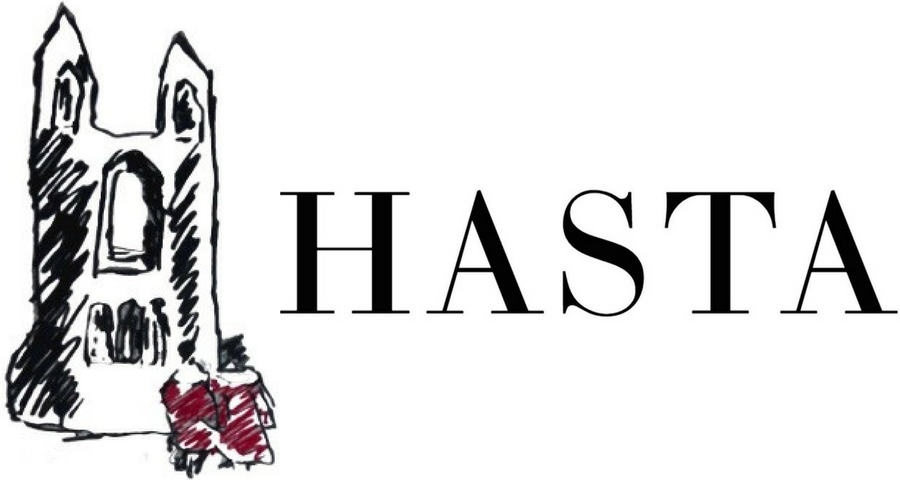Illuminating Hong Kong’s Skyline with M+ Façade
By Joanne Yau
Fig 1. Ho Tzu Nyen, Night Charades, video, 2025, courtesy of M+, Hong Kong.
If you’ve ever been to Hong Kong, you may have had the chance to stroll around the sides of Victoria Harbour and admire the night view of the towering skyscrapers. From laser-wielding cyberpunk action films to slow romances, the city’s skyline has long been part of the popular imagination of international media while being deeply entrenched in local cultural memory. In recent years, a new addition to the skyline has emerged – a gigantic media façade sitting atop the contemporary art museum M+. The façade was engineered and installed in October 2021 before the museum a month later. It may seem hefty at first at 65 meters by 110 meters wide, it is still easy to miss given the high density of buildings in its surroundings. Still, once one sets their eyes on the glowing media canvas, it is almost impossible to look away. Whenever I stroll along Central Harbour at night, I always try to catch a glimpse of the moving images on the LED-powered canvas and find myself being struck by its experimental presentation.
As a Film Studies and former Art History student, I have always been interested in the intersection between the art and film mediums, more specifically, how merging the two can create new spectrums of sensory experiences. The façade’s commissioned works frequently leverage these two mediums, presenting dynamic screenings in a diverse range of tones – from playful to intellectual, philosophical, and spiritual. For instance, Zhou Tao’s Jade Jadeite innovates upon the classical Chinese scroll paintings of rivers to offer a meditative journey through the Pearl River Region. This intermediality creates novel dimensions of time and space, exploring the city’s unique geographical features and its cultural positioning among grander narratives of historical development.
Fig 2. Zhou Tao, Jade Jadeite, video, 2024, courtesy of M+, Hong Kong.
M+ Façade’s latest work, Night Charades, is by Singaporean artist Ho Tzu Nyen and was co-commissioned by M+ Museum and Art Basel. The work coincides with the tenth edition of Art Basel Hong Kong, which ran the most recent weekend. One of the most successful arts events in the city in the past few years, Art Basel drew in hundreds of galleries, auctions and thousands of tourists and is asymptomatic of the post-pandemic recovery of the city’s art scene. Night Charades takes viewers on a retroactive yet post-nostalgic odyssey, featuring AI-generated characters in a series of iconic scenes from the Golden Age of Hong Kong Cinema. The familiar faces of Leslie Cheung, Stephen Chow, and Maggie Cheung alike appear in hyperstylized renditions of classical films by John Woo and Wong Kar-Wai. Playful while uncanny at times, neon colors and silhouettes dance and leap across the screen – martial art poses appear in fluid motions, while the human form emerges in highly saturated and contrasting theatrical colors. By bridging the vibrant cinematic landscape of the past with contemporary, surreal mimesis, the final product presents an ambivalent connection between the city’s past and present. It invokes a cyclic form of nostalgia, incorporating new reinterpretations of a bygone era within the city’s highly developed urban landscape. Overall, the work is a fitting choice for an international event like Art Basel – seeing classic film imagery in a revitalized format would certainly be a point of attraction for many.
Fig 3. Tong Yang-Tze and Chris Cheung, Ink | Pulse, video, 2023 , courtesy of M+, Hong Kong.
Another interesting usage of intermediality would be Ink | Pulse by Taiwanese calligraphy artist Tong Yang-Tze and Hong Kong media artist Chris Cheung, which was commissioned and screened in 2023. The algorithm-driven work is based on Tong Yang-Tze’s Silent Music series, which are 100-ink-based pieces collected by Tong over the years. The different pieces come alive with Cheung’s animation, which presents Tong’s calligraphy work in dynamically flowing and pulsating strokes, dots and markings. Looking at the facade from afar, the movement mimics a lot of different things, but it most closely resembles the rhythm of a beating heart, cell divisions or artillery. The work emphasizes the interconnectedness between art, the human body and energies of life, alluding to classical Chinese philosophies such as Qi – a vital force or energy that flows through the universe and all living beings. This encounter between media and calligraphy is an innovative way of reinvigorating a classical artistic practice, one that has dwindled over the years as society becomes more and more detached from tradition.
Fig 4. Tong Yang-Tze and Chris Cheung, Ink | Pulse, video, 2023 , courtesy of M+, Hong Kong.
Overall, the strongest quality of M+ Façade is that its commissions are all tightly caught up with the signs of the times, offering insight and new ways of breathing life into a society that is rapidly changing. All its pieces speak to larger socio-cultural realities – whether it be the need to reembrace cinematic traditions in new forms or modernizing long-held practices. Indeed, in a city marked by a breakneck speed of development, to the point where it is difficult to make time for art, having a media canvas viewable from accessible locales is a smart way of bringing art into an urban space. One potential downside is that the lack of sonic output can make the viewing experience can create a distancing effect, but this interestingly also renders a sense of plasticity that fits with the hyperreal visuals and medial self-reflexivity. Nevertheless, with its ingenious play of sight and space, M+ Façade has become an unmissable thing to check off on every tourist and locals’ bucket list and has successfully integrated itself into the city’s rich art ecosystem.
References
Art Basel. “Art Basel in Hong Kong,” n.d. https://www.artbasel.com/hong-kong?lang=en.
www.mplus.org.hk. “M+ Facade | M+,” n.d. https://www.mplus.org.hk/en/mplus-facade/.




